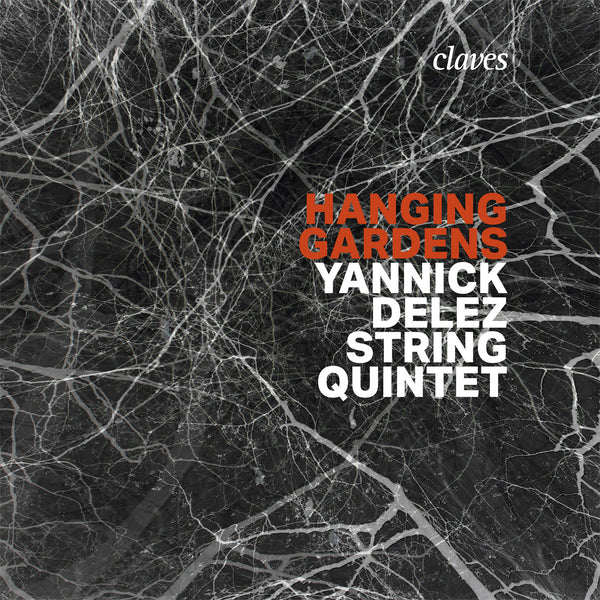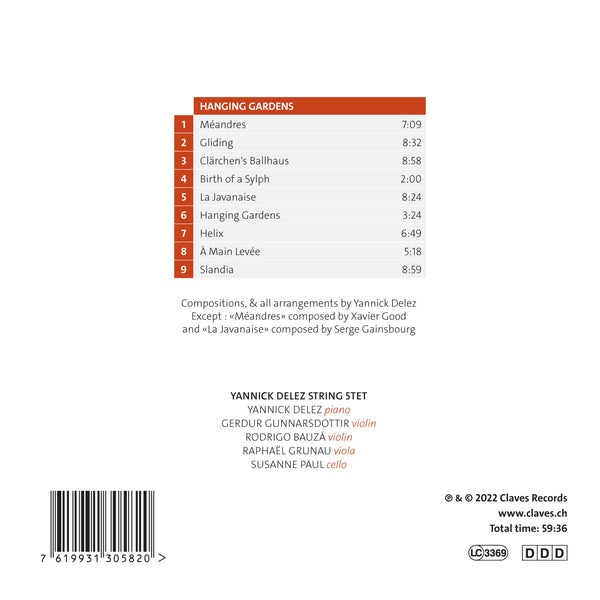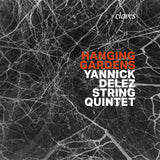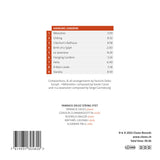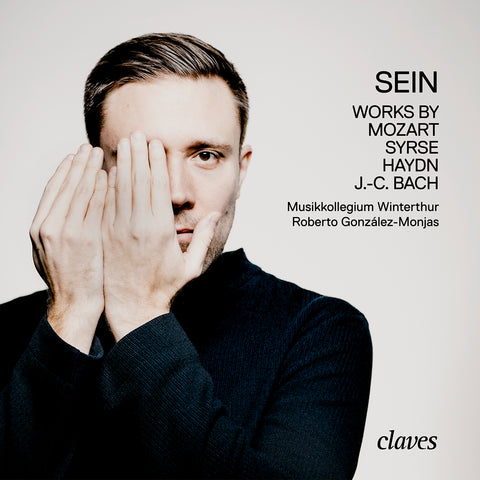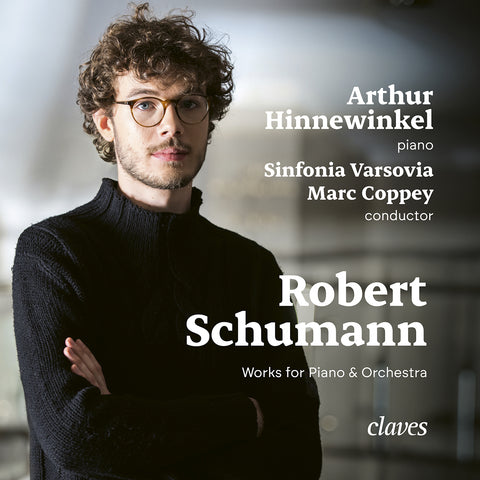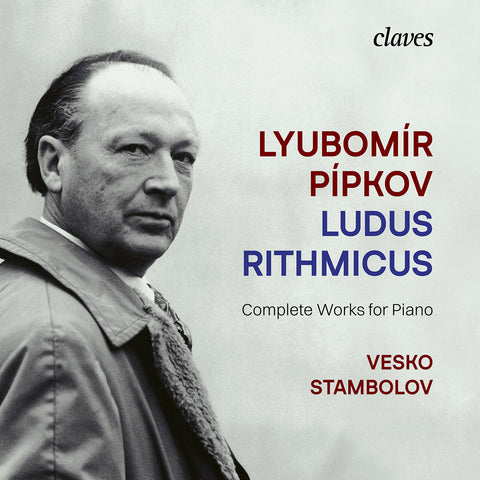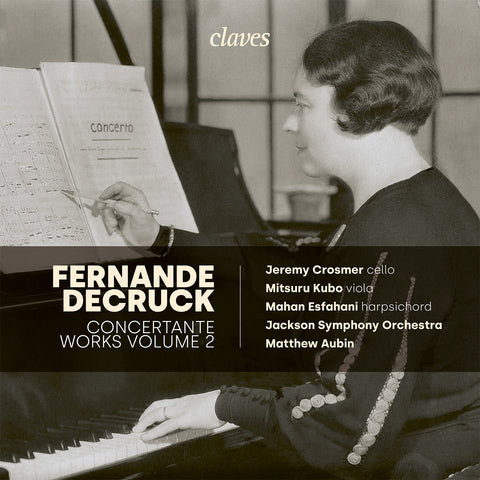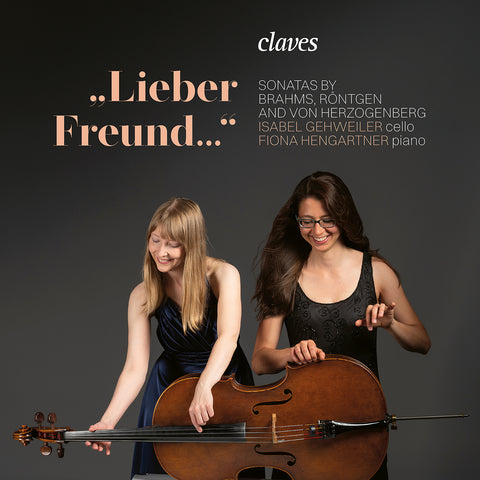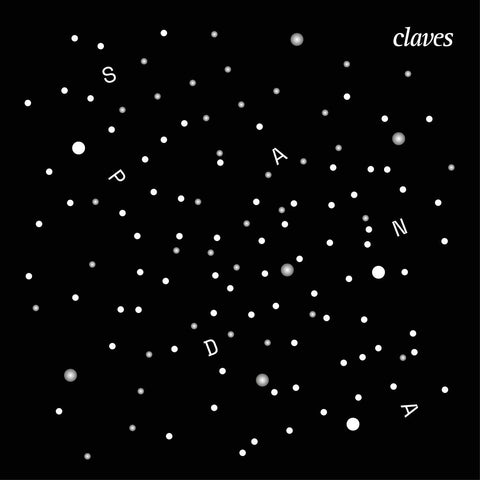(2022) Hanging Gardens, Yannick Délez String 5tet
Category(ies): Chamber Modern Piano Folk, popular & Jazz
Instrument(s): Cello Piano Viola Violin
Main Composer: Yannick Délez
Ensemble: Yannick Délez String 5tet
CD set: 1
Catalog N°:
CD 3058
Release: 02.12.2022
EAN/UPC: 7619931305820
This album is now on repressing. Pre-order it at a special price now.
CHF 18.50
This album is no longer available on CD.
This album has not been released yet. Pre-order it from now.
CHF 18.50
This album is no longer available on CD.
CHF 18.50
VAT included for Switzerland & UE
Free shipping
This album is no longer available on CD.
VAT included for Switzerland & UE
Free shipping
This album is now on repressing. Pre-order it at a special price now.
CHF 18.50
This album is no longer available on CD.
This album has not been released yet.
Pre-order it at a special price now.
CHF 18.50
This album is no longer available on CD.
CHF 18.50
This album is no longer available on CD.
HANGING GARDENS, YANNICK DÉLEZ STRING 5TET
MÉANDRES
This theme, which you didn’t write yourself, is nevertheless most obviously integrated into your quintet’s repertoire. As is often the case in your music, there is a “perpetual phrase”, a deliberately unstructured flow of speech. It indeed evokes meandering, but without giving the impression of wandering.
In traditional jazz, the theme is a structured base on which the freedom of improvisation sets in during the choruses. However, one has the feeling in your music that the theme statement ostensibly avoids disclosing its structure, which is somewhat paradoxically revealed during the improvised solos. Is this a way for you to question or even hustle the jazz tradition while still respecting it?
Yes, that’s true. Coming from this tradition, I remain, in some respects, quite attached to it. It’s a very efficient system that has proved its worth for over a century! But it’s a structure that literally runs in a closed circuit. So yes, I often try to shake it up or even abolish it. That’s what I’m striving for in each new project: the opportunity to find new ways of conceiving the writing-improvisation structure, to make a tailor-made language.
In this piece, I have meaningfully disjointed and scattered the thematic elements vertically and horizontally. Not only because this piece (composed by Xavier Good) makes use of a very recognisable melodic sequence but also because it is a piece that I did not compose myself. This implies a different relationship towards the writing, with more freedom and playfulness.
***
GLIDING
This piece, like many of your compositions, seems through-composed. The flow of the musical ideas appears to result in the first place from intuitive freedom but also gives the feeling of a construction.
How would you describe the relationship between spontaneity and elaboration in your writing technique?
When you begin a piece, do you start writing without establishing a preliminary plan? Or do you already have a clear idea of what you want to hear and let people hear?
I’ve always been very empirical in my way of working. I seldom have a plan, and if I do, the piece always ends up deviating from it sooner or later.
It’s often through improvisation that an idea pops up and starts the process. The elements are often only embryonic: a chord, a bass line, or just a timbre. Then suddenly, these seem to have something to say, to have an identity.
Once the composition has begun, I often feel that it dictates its direction and self-induces its balance. I then just follow it and listen to it. So in that sense, it’s very intuitive.
However, although the instrumental elaboration of each part is equally empirical, it’s painstaking work during which each corpuscle is reworked, dissected and permuted to find something evident and elaborate.
***
CLÄRCHEN BALLHAUS
There are often different episodes related to an initial idea in your compositions. For example, in “Clärchen Ballhaus”, a theme with complex measures and rhythms is followed by a section full of tenderness, on which a violin, followed by a piano, improvise. Nevertheless, the different parts are unified by a stubborn motif and organically linked with considerable skill, as if each new idea “glides in” from the previous one. Would you say that the concept of “variation” is present in your writing?
Yes, I grew up with jazz, but so-called classical music has taken up more and more room over time. The concept of variation is much more present in my works than in traditional jazz; it is a means that I have used a lot for writing developments in order to avoid the formal “thinness” of jazz previously mentioned.
Moreover, the musicians’ approaches to improvisation are quite different while also giving a feeling of beautiful complementarity. How did you meet the members of your quintet?
For this project, I didn’t want to have a classical string quartet “escorting” a jazz pianist without ever improvising. Instead, my intention was to find a configuration that was as hybrid as possible, to have a wide variety of scenarios available.
I first contacted Susanne Paul. I had heard her “MOVE Quartet”; although it integrates a double bass instead of a second violin, I felt it was an excellent starting point to create a mixed quartet. Susanne Paul quickly suggested a few names, and even if there have been a few departures and arrivals since then, the group has always consisted of musicians with very different improvisational practices, ranging from experimental to “scholar jazz” and crossing Balkan music on the way...
And to what extent do the musicians’ proposals stimulate or enrich your own research?
When I bring a piece to rehearsal, everything still has to be done, even though it is written out from the first to the last note. The compositions really find their balance during rehearsals with the contributions of everyone involved, not to mention the infinite variety offered by the violinist’s interpretation, which can literally metamorphose a piece. In this sense, it is genuinely a collective work in which all contributions are valuable.
***
BIRTH OF A SYLPH
This piece, which seems to evoke a Nordic landscape, is a free improvisation. The understanding between musicians is such that it doesn’t seem to be any less “written” than the other pieces on the recording. How do you work on improvisation with the members of your Quintet? What are the instructions or sources of inspiration?
Indeed, it’s an entirely improvised piece; the only given instruction was “fairly short”.
When we talk about free improvisation such as here, and not more “constrained” improvisation as in the repertoire’s more typically jazz passages, I avoid setting constraints or concepts; I prefer to let the collective intelligence and the chance of the moment speak for themselves. Especially since we were all struck by how easily we managed to connect since the first attempts at free improvisation at the beginning of the project.
And how much do you value free improvisation during your concerts?
We adapt according to the places in which we perform. But it’s always present, sometimes hidden in an introduction, and sometimes the whole piece is improvised, such as here. It’s a practice I’m very keen to maintain because it always creates something new on a sound level and expressiveness within the group. As a composer, it is also a practice that allows me to take a step back and let the quartet lead the dance.
***
JAVANAISE
This new repertoire gives the impression that your writing is more to the point than before.
In this magnificent arrangement of the Gainsbourg theme, and throughout the album, each harmony is experienced; the melodies – written or improvised – are expressive, without any chattering. Does this correspond to a personal evolution? And to what extent has composing for a string quartet enticed you to polish or refine your language?
It’s never easy to notice this kind of evolution yourself. But I believe that since I am touched by simpler things, it is natural that this can be felt in my writing.
More generally speaking, what motivated you to write for strings?
To write for a quartet is a decision I have made and abandoned several times over the last fifteen years! Like many musicians, the quartet is a kind of irresistibly seductive instrumental ideal. But for someone who has never studied instrumentation, composition or counterpoint and who wishes to avoid certain recuperative clichés, the idea of writing for this setting becomes as daunting as it is seductive. So it took some time to figure out how to integrate the string quartet into my music and my playing, which is often quite dense, without overpowering each other.
***
HANGING GARDENS
You sometimes describe your musical style as “impressionist jazz”. Your “jazz” foundations are, of course, constantly present in your music. Regarding impressionism: does it refer to French music of the early 20th century? The harmonies in “Hanging Gardens” are sometimes reminiscent of Fauré’s chamber music, but the expressiveness of your compositions and piano playing seems to me just as romantic as impressionistic.
How would you describe your music style, and what are the influences?
For some reason, which I can’t at all explain, my music and playing have been more and more compared over the years to certain classical music, even though I never studied it and only listened to it very occasionally. This made me want to take a closer look and indeed discover a great affinity with certain composers of the late 19th and early 20th centuries. I also managed to highlight the intersections between Ravel, Ligeti, Messiaen, Britten and some contemporary jazz pianists that I had admired for a long time (such as John Taylor, Bobo Stenson, Egberto Gismonti, and Mario Laghina).
Romanticism? Yes, of course! Even if it’s a more connoted labelling, it’s certainly an integral part of my way of expressing myself.
***
HELIX
In this piece, the two facets of your art – writing and improvisation – are particularly highlighted: the melancholic, modest, enigmatic, “interrogative” composer and the incantatory, inebriated, radiant, virtuoso pianist...
Is music a way for you to connect, to bring together hybrid or even opposite aspects of your personality?
Yes, I believe these are two highly complementary aspects of musical practice, which are necessary for my psychological balance!
On the one hand, composition: the backroom, the laboratory, the long-term, the meticulous and solitary elaboration... Then comes the moment of performance, of the interpretation that one hopes will live up to the previously elaborated recipe.
For me, improvisation is the other side of the balance scale, where all you have to do is provide a space in which – at the cost of mastering the difficulties – anything can happen at any moment, where spontaneity and unpredictability take the lead. I feel that a successful improvisation is one in which the musician dares and manages to let things happen without interfering with what is happening, rather than demonstrating a will. It is a very particular state where one is simultaneously very “focused” and a spectator.
These two aspects: rigorous elaboration and letting go, have very balancing virtues for the music itself and the performers, but I also believe for the audience, which inevitably receives very different energy whether the passages are written to the millimetre or improvised.
***
À MAIN LEVÉE
The theme’s rhythm appears to be the precise shaping of a hesitant expression. In contrast, the improvisation seems to be full of coherence, although it is “erratic”.
In terms of composition technique and aesthetic concerns, it is closer to so-called “contemporary” music than jazz. Do you like to surprise listeners?
Yes, this piece uses an unconventional graphic notation system; the aim is to get as close as possible to spoken language with these impulses and hesitations, but with great overall precision and without any apparent skeleton.
Indeed, I will never tire of surprising the listener. Surprise is the energy that drives the music forward and that keeps the listener awake. But of course, to surprise, you have to be able to install something.
Since I was very young, I’ve liked the idea that the musician or composer’s job consists of benevolently taking the listeners by the hand, to take them where they would never have imagined going.
***
SLANDIA
Starting from an ostinato, you develop several sound planes through contrapuntal additions and different time scales, a little like an ornate chorale. Such processes appear in certain forms of American music, but in your language, they are apprehended with sensitivity, never mechanically. What is your relationship to so-called “minimalist” music? And more generally, where does your taste for ostinati, contrapuntal superpositions and polyrhythms come from?
It was between 2000 and 2007, during my time with the group Piano Seven (7 pianos + percussion), that I really discovered minimalist music. So in the first place, thanks to you, both through the music you wrote and the composers you introduced me to at that time.
But I noticed much later that the composition process for this project was also very formative in itself. The almost infinite possibilities offered by this instrumental “monster” developed my taste for piling up sequences that eventually merge into textures, then fade into the background to accompany a melody, which itself generates a modulation, etc... a bit like a long zoom-out from the micro to the macroscopic scale.
In the end, I have the impression that the exotic complexity of writing for seven pianos and percussion has finally contributed to establishing a sort of base, a fundamental mechanism in my way of conceiving composition for medium and large ensembles.
(Interview by Valentin Peiry)
***
YANNICK DELEZ piano / composition
Yannick Délez, is a swiss pianist-composer. Self- educated musician from a very young age, he undertook professional studies at the Ecole de Jazz of Lausanne in 1990 where he obtains a piano diploma. He develops a personal playing amongst many acoustic jazz bands. Then he joins the band Piano Seven (7 pianos and guests) with which he records 4 albums and plays in many concert halls of Hong Kong, Sao Paulo, Taipei, Singapore, Beirut and Beijing, Shangai, Saigon, among others. He participates in three creations of the group for which he composes and arranges, one of those being an original performance with 7 pianos, percussion, and brass quintet for the Swiss National Exhibition in 2002.
The first record bearing his name is “Rouge” (Altrisuoni 2003) a piano solo album that received international acclaim. One can appreciate the particularity of his piano playing simultaneously with pointillist and lyric. ...“based on rhythmical ostinati and a truly original technique...” (RSR La Première), “... a family of thinking favoring romantic lyricism and sophisticated harmonic choices...” (Jazzman***).
In 2004 he composes a repertoire for piano – bass clarinet – soprano saxophone and creates his own trio (Yannick Délez Trio) with Philippe Ehinger (bass clarinet) and Stefano Saccon (soprano saxophone). They are selected for the Swiss Diagonales Jazz 07.
In 2004, he also constituted a Duo with the singer ChloéLévy. The ChloéLévy Yannick Délez Duo records in December 2006 his first album Leinicha at the Rainbow Studio in Oslo with the audio engineer Jan Erik Kongshaug. This album received positive feedback from the specialized press (Jazzman****. Télérama ffff, Concerto*****).
In 2010 he publish his second piano solo album: Boreales (Unit Records UTR 4271) which receive also very positive feedback from the European press (Jazz’n’more *****, Concerto ****)
In 2016 he publish a third piano solo album. LIVE / MONOTYPES (Unit Records / Deutschlandradio UTR 4755) a double album based on a live performance recorded by Deutschland radio. The album was acclaimed by the European press and is nominated for the National discographic’s critic award in Germany (Preis der Deutschen Schallplattenkritik).
Read other BIOs in the booklet
***
Gerdur Gunnarsdottir, violin
Rodrigo Bauzá, violin
Raphaël Grunau, viola
Susanne Paul, cello
Yannick Delez, piano / composition
***
Cover photo: © 2020 Paola Telesca, Series on Nature
REVIEWS
« Etrange objet musical, étrange et magnifique, capable de déjouer toute classification, que ce Hanging Gardens de Yannick Delez et de son quintet à cordes. Il y a du jazz à la source, bien sûr – le contraire eût été étonnant, car c’est précisément de là que vient ce pianiste et compositeur valaisan, que l’on connaît aussi comme enseignant à l’EJMA, école de jazz et de musique actuelle de Lausanne. Mais depuis 2017, Yannick Delez a commencé à travailler avec un quatuor à cordes classique. Voici donc le String 5et. [..] A côté des belles compositions et des improvisations de Yannick Delez, signalons deux reprises contenues dans l’ouvrage, particulièrement agréables: le magnifique «Méandres» de Xavier Good qui ouvre le disque, superlatif, hypnotique et fascinant, et une charmante restitution jazzy de «La Javanaise» de Serge Gainsbourg. » - Gianluigi Bocelli, janvier 2023
« [..] Avec cet ensemble, Yannick Delez évite l’écueil du collage superficiel et présente une vraie synthèse, clairement centrée sur le cool jazz, mais l’élargissant d’impressionnisme, de romantisme à la Scriabine et de minimalisme ; on lui prête même par endroits une affinité à Anton Webern (Birth of A Sylph) et à Georgy Ligeti (Slandia). Dans chaque pièce, on sent la maturité de l’artiste ayant assimilé ou recréé les styles, comme autant de couleurs, distinctes mais parentes entre elles. [..] » - Pierre-Alain Chamot, avril 2023
(2022) Hanging Gardens, Yannick Délez String 5tet - CD 3058
MÉANDRES
This theme, which you didn’t write yourself, is nevertheless most obviously integrated into your quintet’s repertoire. As is often the case in your music, there is a “perpetual phrase”, a deliberately unstructured flow of speech. It indeed evokes meandering, but without giving the impression of wandering.
In traditional jazz, the theme is a structured base on which the freedom of improvisation sets in during the choruses. However, one has the feeling in your music that the theme statement ostensibly avoids disclosing its structure, which is somewhat paradoxically revealed during the improvised solos. Is this a way for you to question or even hustle the jazz tradition while still respecting it?
Yes, that’s true. Coming from this tradition, I remain, in some respects, quite attached to it. It’s a very efficient system that has proved its worth for over a century! But it’s a structure that literally runs in a closed circuit. So yes, I often try to shake it up or even abolish it. That’s what I’m striving for in each new project: the opportunity to find new ways of conceiving the writing-improvisation structure, to make a tailor-made language.
In this piece, I have meaningfully disjointed and scattered the thematic elements vertically and horizontally. Not only because this piece (composed by Xavier Good) makes use of a very recognisable melodic sequence but also because it is a piece that I did not compose myself. This implies a different relationship towards the writing, with more freedom and playfulness.
***
GLIDING
This piece, like many of your compositions, seems through-composed. The flow of the musical ideas appears to result in the first place from intuitive freedom but also gives the feeling of a construction.
How would you describe the relationship between spontaneity and elaboration in your writing technique?
When you begin a piece, do you start writing without establishing a preliminary plan? Or do you already have a clear idea of what you want to hear and let people hear?
I’ve always been very empirical in my way of working. I seldom have a plan, and if I do, the piece always ends up deviating from it sooner or later.
It’s often through improvisation that an idea pops up and starts the process. The elements are often only embryonic: a chord, a bass line, or just a timbre. Then suddenly, these seem to have something to say, to have an identity.
Once the composition has begun, I often feel that it dictates its direction and self-induces its balance. I then just follow it and listen to it. So in that sense, it’s very intuitive.
However, although the instrumental elaboration of each part is equally empirical, it’s painstaking work during which each corpuscle is reworked, dissected and permuted to find something evident and elaborate.
***
CLÄRCHEN BALLHAUS
There are often different episodes related to an initial idea in your compositions. For example, in “Clärchen Ballhaus”, a theme with complex measures and rhythms is followed by a section full of tenderness, on which a violin, followed by a piano, improvise. Nevertheless, the different parts are unified by a stubborn motif and organically linked with considerable skill, as if each new idea “glides in” from the previous one. Would you say that the concept of “variation” is present in your writing?
Yes, I grew up with jazz, but so-called classical music has taken up more and more room over time. The concept of variation is much more present in my works than in traditional jazz; it is a means that I have used a lot for writing developments in order to avoid the formal “thinness” of jazz previously mentioned.
Moreover, the musicians’ approaches to improvisation are quite different while also giving a feeling of beautiful complementarity. How did you meet the members of your quintet?
For this project, I didn’t want to have a classical string quartet “escorting” a jazz pianist without ever improvising. Instead, my intention was to find a configuration that was as hybrid as possible, to have a wide variety of scenarios available.
I first contacted Susanne Paul. I had heard her “MOVE Quartet”; although it integrates a double bass instead of a second violin, I felt it was an excellent starting point to create a mixed quartet. Susanne Paul quickly suggested a few names, and even if there have been a few departures and arrivals since then, the group has always consisted of musicians with very different improvisational practices, ranging from experimental to “scholar jazz” and crossing Balkan music on the way...
And to what extent do the musicians’ proposals stimulate or enrich your own research?
When I bring a piece to rehearsal, everything still has to be done, even though it is written out from the first to the last note. The compositions really find their balance during rehearsals with the contributions of everyone involved, not to mention the infinite variety offered by the violinist’s interpretation, which can literally metamorphose a piece. In this sense, it is genuinely a collective work in which all contributions are valuable.
***
BIRTH OF A SYLPH
This piece, which seems to evoke a Nordic landscape, is a free improvisation. The understanding between musicians is such that it doesn’t seem to be any less “written” than the other pieces on the recording. How do you work on improvisation with the members of your Quintet? What are the instructions or sources of inspiration?
Indeed, it’s an entirely improvised piece; the only given instruction was “fairly short”.
When we talk about free improvisation such as here, and not more “constrained” improvisation as in the repertoire’s more typically jazz passages, I avoid setting constraints or concepts; I prefer to let the collective intelligence and the chance of the moment speak for themselves. Especially since we were all struck by how easily we managed to connect since the first attempts at free improvisation at the beginning of the project.
And how much do you value free improvisation during your concerts?
We adapt according to the places in which we perform. But it’s always present, sometimes hidden in an introduction, and sometimes the whole piece is improvised, such as here. It’s a practice I’m very keen to maintain because it always creates something new on a sound level and expressiveness within the group. As a composer, it is also a practice that allows me to take a step back and let the quartet lead the dance.
***
JAVANAISE
This new repertoire gives the impression that your writing is more to the point than before.
In this magnificent arrangement of the Gainsbourg theme, and throughout the album, each harmony is experienced; the melodies – written or improvised – are expressive, without any chattering. Does this correspond to a personal evolution? And to what extent has composing for a string quartet enticed you to polish or refine your language?
It’s never easy to notice this kind of evolution yourself. But I believe that since I am touched by simpler things, it is natural that this can be felt in my writing.
More generally speaking, what motivated you to write for strings?
To write for a quartet is a decision I have made and abandoned several times over the last fifteen years! Like many musicians, the quartet is a kind of irresistibly seductive instrumental ideal. But for someone who has never studied instrumentation, composition or counterpoint and who wishes to avoid certain recuperative clichés, the idea of writing for this setting becomes as daunting as it is seductive. So it took some time to figure out how to integrate the string quartet into my music and my playing, which is often quite dense, without overpowering each other.
***
HANGING GARDENS
You sometimes describe your musical style as “impressionist jazz”. Your “jazz” foundations are, of course, constantly present in your music. Regarding impressionism: does it refer to French music of the early 20th century? The harmonies in “Hanging Gardens” are sometimes reminiscent of Fauré’s chamber music, but the expressiveness of your compositions and piano playing seems to me just as romantic as impressionistic.
How would you describe your music style, and what are the influences?
For some reason, which I can’t at all explain, my music and playing have been more and more compared over the years to certain classical music, even though I never studied it and only listened to it very occasionally. This made me want to take a closer look and indeed discover a great affinity with certain composers of the late 19th and early 20th centuries. I also managed to highlight the intersections between Ravel, Ligeti, Messiaen, Britten and some contemporary jazz pianists that I had admired for a long time (such as John Taylor, Bobo Stenson, Egberto Gismonti, and Mario Laghina).
Romanticism? Yes, of course! Even if it’s a more connoted labelling, it’s certainly an integral part of my way of expressing myself.
***
HELIX
In this piece, the two facets of your art – writing and improvisation – are particularly highlighted: the melancholic, modest, enigmatic, “interrogative” composer and the incantatory, inebriated, radiant, virtuoso pianist...
Is music a way for you to connect, to bring together hybrid or even opposite aspects of your personality?
Yes, I believe these are two highly complementary aspects of musical practice, which are necessary for my psychological balance!
On the one hand, composition: the backroom, the laboratory, the long-term, the meticulous and solitary elaboration... Then comes the moment of performance, of the interpretation that one hopes will live up to the previously elaborated recipe.
For me, improvisation is the other side of the balance scale, where all you have to do is provide a space in which – at the cost of mastering the difficulties – anything can happen at any moment, where spontaneity and unpredictability take the lead. I feel that a successful improvisation is one in which the musician dares and manages to let things happen without interfering with what is happening, rather than demonstrating a will. It is a very particular state where one is simultaneously very “focused” and a spectator.
These two aspects: rigorous elaboration and letting go, have very balancing virtues for the music itself and the performers, but I also believe for the audience, which inevitably receives very different energy whether the passages are written to the millimetre or improvised.
***
À MAIN LEVÉE
The theme’s rhythm appears to be the precise shaping of a hesitant expression. In contrast, the improvisation seems to be full of coherence, although it is “erratic”.
In terms of composition technique and aesthetic concerns, it is closer to so-called “contemporary” music than jazz. Do you like to surprise listeners?
Yes, this piece uses an unconventional graphic notation system; the aim is to get as close as possible to spoken language with these impulses and hesitations, but with great overall precision and without any apparent skeleton.
Indeed, I will never tire of surprising the listener. Surprise is the energy that drives the music forward and that keeps the listener awake. But of course, to surprise, you have to be able to install something.
Since I was very young, I’ve liked the idea that the musician or composer’s job consists of benevolently taking the listeners by the hand, to take them where they would never have imagined going.
***
SLANDIA
Starting from an ostinato, you develop several sound planes through contrapuntal additions and different time scales, a little like an ornate chorale. Such processes appear in certain forms of American music, but in your language, they are apprehended with sensitivity, never mechanically. What is your relationship to so-called “minimalist” music? And more generally, where does your taste for ostinati, contrapuntal superpositions and polyrhythms come from?
It was between 2000 and 2007, during my time with the group Piano Seven (7 pianos + percussion), that I really discovered minimalist music. So in the first place, thanks to you, both through the music you wrote and the composers you introduced me to at that time.
But I noticed much later that the composition process for this project was also very formative in itself. The almost infinite possibilities offered by this instrumental “monster” developed my taste for piling up sequences that eventually merge into textures, then fade into the background to accompany a melody, which itself generates a modulation, etc... a bit like a long zoom-out from the micro to the macroscopic scale.
In the end, I have the impression that the exotic complexity of writing for seven pianos and percussion has finally contributed to establishing a sort of base, a fundamental mechanism in my way of conceiving composition for medium and large ensembles.
(Interview by Valentin Peiry)
***
YANNICK DELEZ piano / composition
Yannick Délez, is a swiss pianist-composer. Self- educated musician from a very young age, he undertook professional studies at the Ecole de Jazz of Lausanne in 1990 where he obtains a piano diploma. He develops a personal playing amongst many acoustic jazz bands. Then he joins the band Piano Seven (7 pianos and guests) with which he records 4 albums and plays in many concert halls of Hong Kong, Sao Paulo, Taipei, Singapore, Beirut and Beijing, Shangai, Saigon, among others. He participates in three creations of the group for which he composes and arranges, one of those being an original performance with 7 pianos, percussion, and brass quintet for the Swiss National Exhibition in 2002.
The first record bearing his name is “Rouge” (Altrisuoni 2003) a piano solo album that received international acclaim. One can appreciate the particularity of his piano playing simultaneously with pointillist and lyric. ...“based on rhythmical ostinati and a truly original technique...” (RSR La Première), “... a family of thinking favoring romantic lyricism and sophisticated harmonic choices...” (Jazzman***).
In 2004 he composes a repertoire for piano – bass clarinet – soprano saxophone and creates his own trio (Yannick Délez Trio) with Philippe Ehinger (bass clarinet) and Stefano Saccon (soprano saxophone). They are selected for the Swiss Diagonales Jazz 07.
In 2004, he also constituted a Duo with the singer ChloéLévy. The ChloéLévy Yannick Délez Duo records in December 2006 his first album Leinicha at the Rainbow Studio in Oslo with the audio engineer Jan Erik Kongshaug. This album received positive feedback from the specialized press (Jazzman****. Télérama ffff, Concerto*****).
In 2010 he publish his second piano solo album: Boreales (Unit Records UTR 4271) which receive also very positive feedback from the European press (Jazz’n’more *****, Concerto ****)
In 2016 he publish a third piano solo album. LIVE / MONOTYPES (Unit Records / Deutschlandradio UTR 4755) a double album based on a live performance recorded by Deutschland radio. The album was acclaimed by the European press and is nominated for the National discographic’s critic award in Germany (Preis der Deutschen Schallplattenkritik).
Read other BIOs in the booklet
***
Gerdur Gunnarsdottir, violin
Rodrigo Bauzá, violin
Raphaël Grunau, viola
Susanne Paul, cello
Yannick Delez, piano / composition
***
Cover photo: © 2020 Paola Telesca, Series on Nature
REVIEWS
« Etrange objet musical, étrange et magnifique, capable de déjouer toute classification, que ce Hanging Gardens de Yannick Delez et de son quintet à cordes. Il y a du jazz à la source, bien sûr – le contraire eût été étonnant, car c’est précisément de là que vient ce pianiste et compositeur valaisan, que l’on connaît aussi comme enseignant à l’EJMA, école de jazz et de musique actuelle de Lausanne. Mais depuis 2017, Yannick Delez a commencé à travailler avec un quatuor à cordes classique. Voici donc le String 5et. [..] A côté des belles compositions et des improvisations de Yannick Delez, signalons deux reprises contenues dans l’ouvrage, particulièrement agréables: le magnifique «Méandres» de Xavier Good qui ouvre le disque, superlatif, hypnotique et fascinant, et une charmante restitution jazzy de «La Javanaise» de Serge Gainsbourg. » - Gianluigi Bocelli, janvier 2023
« [..] Avec cet ensemble, Yannick Delez évite l’écueil du collage superficiel et présente une vraie synthèse, clairement centrée sur le cool jazz, mais l’élargissant d’impressionnisme, de romantisme à la Scriabine et de minimalisme ; on lui prête même par endroits une affinité à Anton Webern (Birth of A Sylph) et à Georgy Ligeti (Slandia). Dans chaque pièce, on sent la maturité de l’artiste ayant assimilé ou recréé les styles, comme autant de couleurs, distinctes mais parentes entre elles. [..] » - Pierre-Alain Chamot, avril 2023
Return to the album | Read the booklet | Composer(s): Yannick Délez | Main Artist: Yannick Délez






